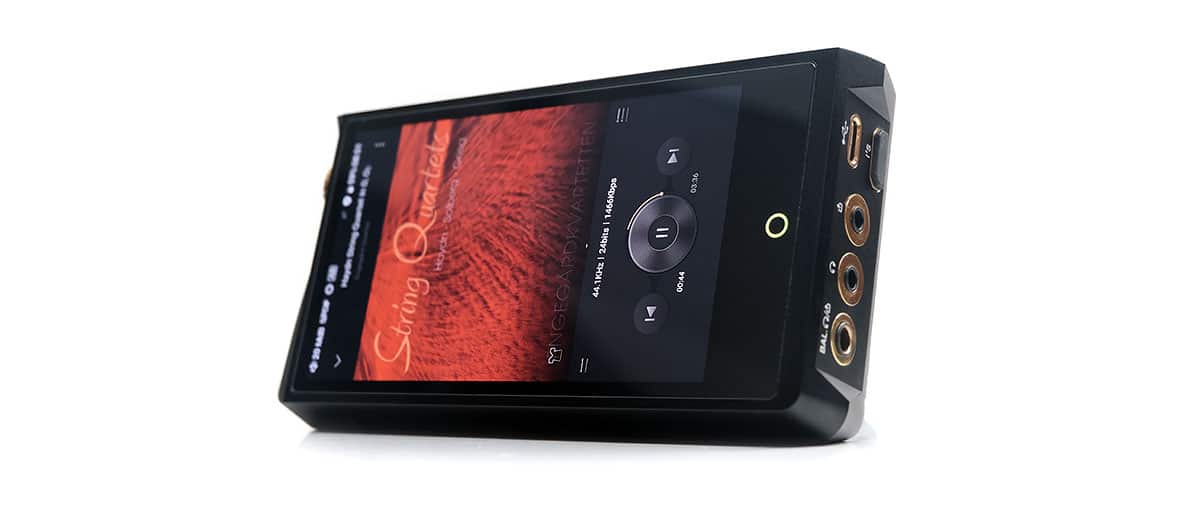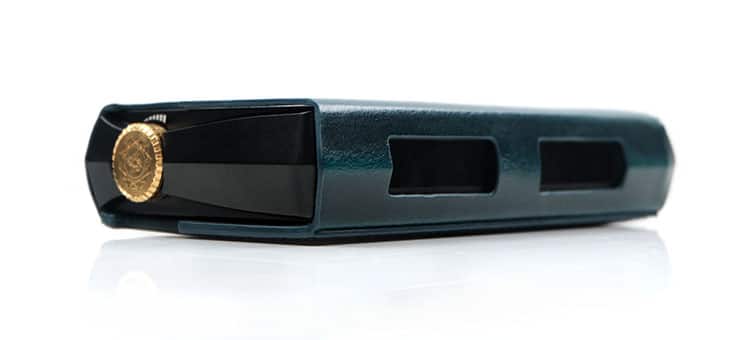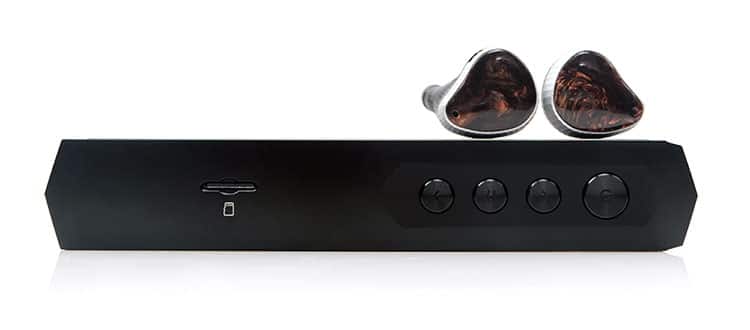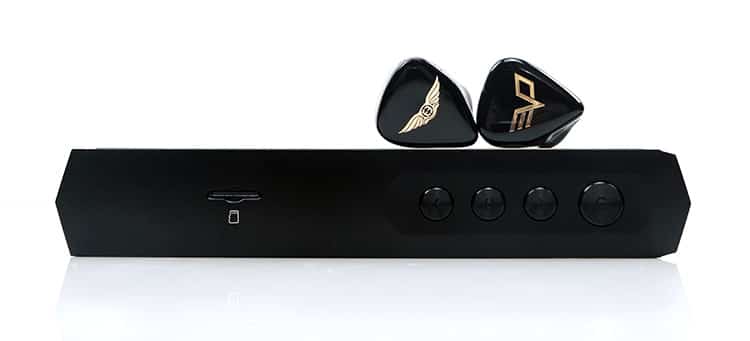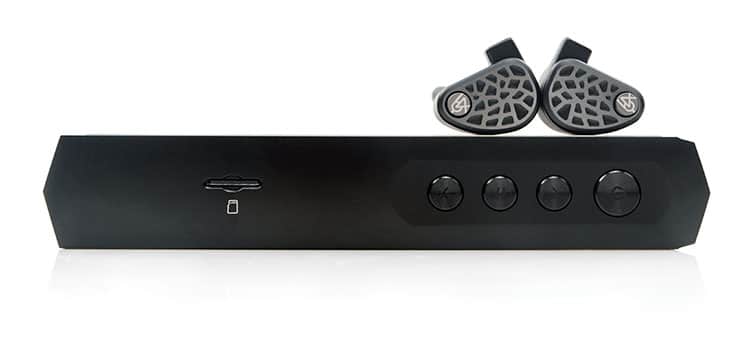Sound Impressions
Summary
The N8ii is a musical chameleon, a DAP stacked with multiple sound signatures though one could argue variations on a similar theme. And what is that theme?
Well, it is not about sheer grunt though it has some power. Rather the N8ii strikes a balance between excellent dynamics and emotional character. How much you want to bias that balance to the former or latter will depend on your choice of both timbre and operational mode. Hence the term, chameleon.
Still, there is a core sound signature with each setting that is quite identifiable with our pairings, one that starts with an incredibly pleasing black background regardless of mode, and I include the tubes in that statement.
It then follows with a fairly planted but still quite a natural sounding solid-state timbre combined with a higher-energy Class AB mode, which drops the pace and smooths out the tone a little when moving to Class A.
It then finishes with a more liquid and euphonic overtone from the tube timbre which can sound quite dynamic with Class AB and more romantic and SETA-like with the Class A alternative. This is less of a clinical master class and more of an intoxicating musical showcase.
But there is more. Throw in the power mode P or P+, (not applicable to Class A mode), and your pairings will either sound relatively relaxed or quite dynamic and vivid in their delivery.
Is there enough power for headphone users? In some cases, yes, modern efficient planar headphones will take to the P+ mode like a duck to water. And yet, more sensitive IEMs, those with dynamic drivers, will get a huge lift from the same mode. The synergy here is off the hook with the N8ii making it a class act for pairing.
Solid State Timbre
It can get quite complicated with all the potential mode and timbre combinations so I will try to keep this part relatively simple.
The solid-state performance follows a fairly faithful transistor-based type of sound signature. You get two types of flavors, Class A and Class AB. Using Class AB, the PRaT is excellent here with a snappy bass response, and a shorter rate of decay giving instrumental and vocal timbre a slightly drier but more energetic overtone.
Switching over to Class A the bass impact drops just a shade but in return, you get a slightly smoother and more relaxed overtone with a little less timbral contrast through the mids and treble.
Class AB is a particularly useful choice for monitors or headphones that do not have an overly steely sounding upper-mids and treble tuning and you want to give a bit of dynamic lift to their performance. It is also a canny pick for those wanting to maximize the low-end producing a strong fundamental from dynamic driver-based monitors.
I would go with Class A for mid-forward monitors with less of a bass emphasis and you do not need such a dynamic push from the P+ mode. Monitoring IEMs such as the 64 Audio U18s sound a little more coherent in Class A with sibilance handled in a more gentile manner.
Cayin has been quite clever with their solid-state tuning. When I mentioned drier earlier this is contextual given the N8ii can go into tube mode. However, for a solid-state DAP in its own right, the overall tone is still quite smooth and slightly to the denser side.
This is nothing like a THX amp tuning which is much cooler sounding, except maybe in the potential to yield an excellent ‘dynamic thrust’ with the P+ mode.
Tube Timbre
The N8ii tube timbre mode is really the star of the show for me and let’s be honest one of the main reasons why you would buy the N8ii in the first place.
This is a smoother, sweeter, and generally more euphonic overtone compared to the solid-state timbre. The decay lengthens a little, and bass notes take on an additional elastic quality offering a bit more bloom and presence. However, the low-end dynamic impact is softer with the speed a degree slower.
That euphony is a nice touch for mid-forward IEMs such as the Empire Ears Odin or the Noble Audio Sultan to a lesser extent. Vocals sound silkier, and less strident on both pairings in this timbre mode. Your only real choice with these two monitors is if you want more PRaT to go along with then stay in Class AB mode or retain a relaxed SETA type performance in Class A.
Like the solid-state mode, you can listen in tube mode either with a Class A operational mode or a Class AB. Both operational modes will have a similar influence on the tube timbre mode as you get in solid-state.
That means a slightly punchier and more energetic sound in Class AB and a smoother more relaxed delivery in Class A. The P mode is not available in Class A mode similar to how it operates for the solid-state timbre mode.
My go-to for most dynamic drivers such as the Odin has been Class AB to give me that P+ mode option. Once turned on you get the best of both worlds with a much better low-end presence, plenty of power and depth combined with a nice liquid leading edge in those very forward vocal performances from the Odin.
Staging & Dynamics
As you would expect from getting this far, the N8ii staging shape and size are not fixed in stone either. That being said, regardless of timbre, operation, or power mode the N8ii soundstage is impressively holographic with excellent dynamic range and a very black background.
I actually think that the N8ii’s imaging capability in this regard is superior to one of my all-time favorite DAPs, the P6 Pro. Not that the P6 Pro casts a wide or airy soundstage to something compared to the DX300 MAX but rather the life-like staging seems almost slightly flatter and less 3D-like compared to the depth and layering of the N8ii.
One area you will notice right away is the difference between the two power modes for both dynamics and staging. The P mode is coherent but stages a bit more neutral in comparison to the P+ which pulls you a bit closer to the instruments as well as giving vocals a tremendous lift in presence.
It not so much reduces the staging size but rather brings you right into it sounding deeper, more powerful, and vibrant in the process. It’s the equivalent of watching a big stage from rows 5-6 to sitting right in the middle of the band and having everything swirl around you. Impressive stuff.
Timbre and operation modes will also be a factor. The solid-state will produce a punchy low-end but I tend to find the tube mode to enhance and disperse the sub-bass bloom a little bit more.
Class AB will enhance the treble sparkle a little leading to the perception of some nuanced additional height. In comparison, Class A will reduce the upper bass bloom and bass weight allowing your ear to drift a little more to the midrange performance.
Synergy
Noise
Given the level of EMI with the DX320 AMP13 card when paired with sensitive IEMs this is probably one of the more salient points to start with on the N8ii.
Well, the good news is that to date, or for about 2 months, I have yet to encounter any noticeable EMI with the N8ii in either solid-state or tube mode.
I have also yet to experience any tube pings or microphonics when inserting jacks, something which the AMP13 card is susceptible to. The spring loading suspension tray for the Nutubes does a great job here.
However, like the original N8, the N8ii is not 100% hiss free with sensitive IEMs on a low volume using its tube output for either balanced or SE.
Now, the level of noise or hiss is very low for a tube platform and IEMs like the Campfire Andromeda are super sensitive so that is an extreme example. For less efficient IEMs like the VE EXT and going into SS mode, the N8ii is noise free.
One interesting thing to note is the mute relay application on the N8ii. If you throw down the volume to 0 you will hear a small click as the relay kicks in which cancels out 99% of the noise and all audible music.
However, if you change the timbre from tube to solid-state or vice versa that relay is lost on the same volume level and you hear a small amount of noise or audio signal.
By going up the volume and back down to zero again the mute relay then kicks in. It is a small observation, not something that has a real-world application in most people’s daily lives but still something I picked up on.
Power
Now, there are more powerful DAPs currently in the market with the FiiO M17 a prime example at up to 1.5W from a 32Ω load and 3W on the same load using DC power. The N8ii’s 750mW peak power rating on a 32Ω is therefore moderate to good but not top tier.
If you plan on using headphones the additional voltage swing from the Class AB P+ mode will make a significant difference in terms of the ability of the N8ii to drive it properly or to a higher level. In the regular P mode, the sound will lose a bit of dynamic range and verve whereas the P+ mode gives the entire presentation a huge lift.
Moderately efficient low impedance planar headphones will work quite well with the N8ii. I tested 3 headphones in that category that I rate highly, the HIFIMAN Arya Stealth Edition, Audeze’s new MM-500, and the Meze Audio Elite.
All 3 require a medium or high gain setting depending on how you like your volume control when using the N8ii balanced output. All 3 headphones sound much better when you up the voltage levels using P+. With P off the sound is flat with little in the way of a solid kick though refined and smooth sounding with the right timbre match.
P+ gives all 3 headphones a much better dynamic response, particularly on the low-end where all 3 headphones sound a lot punchier and ‘filled-in’. The staging also feels much more immersive and engaging as a result. You get an improved instrumental separation and a stronger holographic performance.
IEM Pairings
It is not just headphones that benefit from using the P+ mode. I got some satisfying results with IEMs with strong bass tuning, particularly dynamic driver models or hybrids.
Dynamic Drivers
For example, the Empire Ears Legend EVO‘s calling card, those Weapon IX dynamic drivers sound a lot deeper and more impactful with P+ turned on than without. Similarly, the JH Audio Jolene‘s dual dynamic driver configuration sounded deeper and more immersive below the 500Hz marker adding some welcome expansive low-end staging to the performance.
One thing between these two that differs is the timbre choice, with Legend EVO sounding snappier and clearer with the N8ii solid-state option and the Jolene’s Knowles drivers for the mids and highs sounding smoother and less steely sounding with the tube timbre mode.
Class A takes away the option for the P+ mode so it tends to sound a little mushier on the low-end for both monitors which does not play to their tuning strengths.
The Noble Audio Sultan can go either way with the N8ii timbre choices though as per above the P+ mode is going to give you the stronger dynamic from its 10mm low-end dynamic driver.
The Tube timbre would be my preference though overall just to give it a slightly more liquid leading edge over the mids and treble but I have to admit the solid state was still quite enjoyable and not that steely or dry sounding.
A Case for non-P+?
Not every monitor is a nailed-on certainty for the N8ii P+ mode. I have to say for the 64 Audio U18s all-BA configuration I preferred the standard P mode over the P+ so long as you adjust the volume to compensate.
The slightly calmer output seems to suit the BA drivers of the U18s a bit more with the P+ mode sounding slightly stressed and peaky in part through the mids and highs.
Granted, you do lose a little snap on the lows going down to standard mode but unless you plan on high-impact EDM you will not lose as much power compared to dynamic driver monitors. The case for standard mode really comes to the fore for vocal refinement and a slightly softer treble delivery, especially when combined with the tube timbre.
I would still use Class AB though with the U18s just to retain as much PRaT as possible on the low-end. However, Class A is not a night and day difference and is entirely suitable for the U18s if you want to retain a stronger focus on vocal smoothness and keep the delivery relatively relaxed and non-fatiguing.
Headphone Pairings
Going back to the 3 headphones we originally tested for the P mode, the additional timbre choices do come into play in terms of further refining the sound.
Meze Audio Elite
For the Elite, I would go with Class AB Solid-state mode and keep the P mode turned on to ensure you get maximum dynamic range and quality bass response. Without the P+ mode, the low-end fades away a little too much allowing the mids to come more into focus.
With the Solid-state mode, there is a shade more harmonic dissonance in the upper mids, and vocals have a slightly harder leading edge as you might expect but it’s nothing pervasive and only really noticeable when switching into the tube mode.
The Class AB Tube mode gives a smoother sound with only a minor diminution in bass presence. It is not quite as snappy sounding but the euphony is enhanced for both vocal and midrange instruments giving it a much more agreeable tone for brighter mixes and higher pitching vocals.
Class A mode means you lose the P+ option so I wouldn’t recommend that unless you are listening to acoustics and intimate vocal performance where refinement and delicacy are more important to you.
HIFIMAN Arya Stealth Edition
For the Arya Stealth, the P+ mode combined with the tube timbre and Class AB gave the most pleasing tonal coloration. The Arya is a brighter headphone than the Elite so you tend to pick up a little bit more on any increase in sharpness.
Not that the N8ii solid-state mode is by any means sharp in its own right but rather the tube timbre produced the more pleasing treble and upper-mids performance with less potential for sibilance.
Audeze MM-500
For the MM-500, I would stay with the N8ii Class AB solid-state in P+ mode. You can use tube timbre if you feel the mid-forward sound is too strong and fatiguing as it tends to relax this a little and soften any leading edges.
However, the MM-500 loves a driving rhythm and responds well to a snappy bass performance which is where the N8ii solid-state timbre focuses on. The decay is also a shade tighter which, in turn, gives you a stronger perception of space and instrumental layering which I feel is important for the MM-500’s more rounded staging quality.

